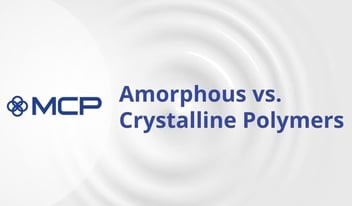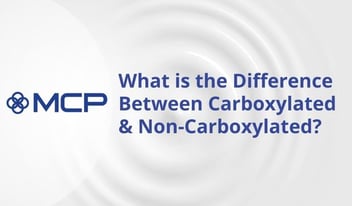
What Is A Polymer?
Polymer Definition A polymer is a chemical substance made from repeating monomer units linked into long chains or networks. Polymers occur naturally, such as DNA, which forms from four linked nucleic acids (adenine, thymine, guanine, and cytosine),..
Polymer Definition
A polymer is a chemical substance made from repeating monomer units linked into long chains or networks. Polymers occur naturally, such as DNA, which forms from four linked nucleic acids (adenine, thymine, guanine, and cytosine), and they can also be manufactured, as in plastics like nylon. The structure of a polymer—its chain length, branching, and crosslinking—determines properties such as hardness, flexibility, solubility, and thermal behavior. Many materials used every day, including roofing materials, latex house paint, adhesives, and coated papers, rely on polymers to improve performance.
The Chemistry of Polymers
Polymers are organic chemicals with a repeating structure. While that sounds simple, these chemicals can get very complex. They can consist of two monomers (dimers), three (trimers), or more. They exist in nature, such as proteins or DNA, or are manufactured, like plastics or nylon.
Polymers can have very different chemical and physical properties, depending on the type of monomer “building block” being used and the placement of strong and weak bonds throughout the polymer structure. They can form single chains, forked branches, or networks of intertwined monomers. Polymers can be based on the same monomer but have different properties depending on how they are polymerized. For example, starch and cellulose are both based on a glucose monomer, but starch is water soluble, and cellulose isn’t. These properties are due to differences in polymer structures.
Organic chemists often take advantage of both the basic monomer and complex polymer structures to create new products. They can make longer or shorter chains, or “pendant” polymers with crosslinks. Crosslinks can make materials harder, while longer chains with links can make materials softer. In addition, polymers with higher molecular weights can become more flexible as temperatures rise.
Types of Polymers
Synthetic polymers include what most people would identify as rubbers, plastics or resins. Rubber-like synthetic polymers are known as elastomers, or elastic polymers. The long molecules making up an elastomeric material are irregularly coiled. When a force is applied, the molecules straighten out in the direction of the applied force. Upon release, the molecules return to their normal compact arrangement.
Polymers that don’t exhibit these elastic qualities would be classified as plastics or resins. Chemists generally recognize two types of plastics — thermosets and thermoplastics. Thermosets contain polymers that cross-link during the curing process to perform an unbreakable, irreversible bond. This means that thermosets will not melt even when exposed to extremely high temperatures. Thermoplastics, by contrast, can be continually softened, melted and reshaped. This makes thermoplastics ideal for use in injection molding or extrusion applications. They can also be recycled by melting them and reshaping them into new materials.
Thermoplastics are further divided into amorphous and crystalline polymers. Amorphous polymers are made of randomly tangled molecules, so they have no long-range order. Molecules in crystalline polymers align in folded stacks, which brings long-range order to polymers, like the orderly arrangement of atoms in typical crystals.
Examples of Polymer Products
The first synthetic plastic polymer was Bakelite, made in 1909 to house telephones and electric components. The first polymer fiber was Rayon, created in 1910 from cellulose. Nylon was created by accident, in 1935, by chemists trying to reproduce spider silk.
Plastics, paints, binders, adhesives, certain construction materials (such as cement admixtures and asphalt modifiers) and textile back coatings are also made from polymers. Some of the more common (and perhaps surprising!) products containing polymers include:
Adhesive Polymers —
Polymer formulations impart certain properties to adhesives, enabling them to perform on a range of surfaces, from metals like copper and stainless steel to glass and ceramics and even very low-energy surfaces like polyethylene. Check out our selection guide to learn more!
Polymer Paints and Coatings —
Strength, flexibility, adhesion, and water resistance are some of the most common performance requirements of polymers used in paints and coatings. Want to learn more? Get our Paints & Coatings Selection Guide
Nonwoven Fabric Examples —
Polymers are used to facilitate chemical bonding of fibers in nonwoven fabrics. They also help to overcome limitations of nonwovens by improving the structure, stiffness, strength and dry-cleaning capability of the finished material. See our Nonwovens selection guide for more information.
Textile Polymer —
Polymer products improve the functional and aesthetic properties of textiles and carpets, improving characteristics such as pilling, abrasion resistance, firmness and appearance. Need further information? Download our Textiles & Carpets selection guide.
Construction Polymer —
When polymers are added to construction materials, they improve key properties of materials, such as thermal performance and moisture resistance. Polymer products help meet the challenging requirements for asphalt modification, concrete repair systems, exterior masonry systems, grouts and mortars, flooring and bridge-deck structures. See what we have to offer by browsing our Construction Adhesives selection guide.
Polymer Paper —
Paper and paperboard manufacturers introduce polymers either on the paper machine or during the converting process to impart desired properties to the finished product. For example, barrier coatings protect paper products and help extend shelf life. Interested in learning more? Check out our Barrier Products for Paper & Board Packaging Selection Guide.
Printing and Polymer Packaging —
Many polymers are optimized for substrates found in packaging applications, such as coated paper, paperboard and flexible films. Polymers can also enhance the gloss and durability of inks and varnishes used in the printing industry. Check out our Barrier Products for Paper & Board Packaging Selection Guide to learn more.
What Makes a Good Polymer?
Knowing the end use helps the chemist develop the right recipe, with all of the right ingredients, that results in a polymer with the right properties.
In the world of emulsion polymers, for example, acrylic latexes made from methyl methacrylate and butyl acrylate monomers show better UV resistance than those made from styrene and butadiene. As a result, acrylic emulsions are good candidates for binders that must demonstrate excellent exterior durability and UV resistance. Styrene-acrylic emulsion polymers are another good option for exterior applications. In addition to UV performance, styrene-acrylic latexes offer enhanced water resistance, abrasion resistance and hardness, making them suitable for industrial coatings, wood coatings, concrete coatings, primers, filter media binders and traffic paint. Styrene-butadiene emulsion polymers are often the chemistry of choice when direct long-term UV exposure is not an issue. Styrene-butadiene latex binders are ideal for applications requiring excellent water resistance, high filler acceptance, good balance of tensile and elongation, and good adhesion to challenging substrates.
That’s just the basis of monomer selection; creating the right product will also guide your choice of surfactant, initiator and carboxylate (which stabilizes reactions and reduces the amount of surfactant needed).
At Mallard Creek, we specialize in emulsion polymers. Our technology has produced materials for roofing and construction, paper coating, printing and packaging, sound damping, adhesives, paints and textiles. The versatility of emulsion polymers and the variables available during polymerization make them very challenging to design. It takes a great deal of expertise to fine-tune a recipe to match a certain application. The chemists at Mallard Creek Polymers collaborate with customers to design polymers for a wide range of industries. We bring a depth of knowledge and a deep bench of polymer specialists to every customer challenge. Contact us today to discuss your need — and how a latex recipe from Mallard Creek Polymers can help you address it.
Interested in learning more about our products? Check out our list of selection guides!
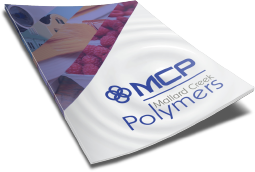
 Construction
Construction
 Nonwovens
Nonwovens
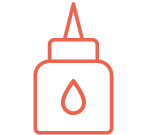 Adhesives
Adhesives
 Textiles
Textiles
 Printing & Packaging
Printing & Packaging
 Paper
Paper
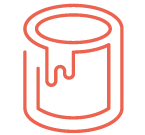 Paints & Coatings
Paints & Coatings












